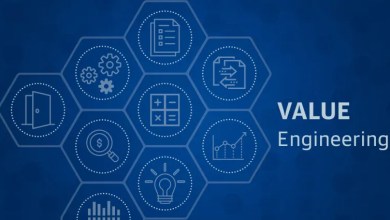
Introduction
In today’s competitive business landscape, organizations strive to optimize their operations to remain agile, cost-effective, and customer-centric. Process mapping and value stream analysis have emerged as indispensable tools for achieving these objectives. By providing a clear visualization of workflows and identifying value-adding activities, businesses can streamline their processes, eliminate inefficiencies, and enhance overall productivity. This comprehensive exploration delves into the concepts of process mapping and value stream analysis and demonstrates how they contribute to the successful streamlining of operations.
Understanding Process Mapping
- Definition and purpose: An overview of process mapping as a technique to graphically represent workflows, steps, and interactions within a system or process.
- Types of process maps: Exploring different process mapping methodologies, such as flowcharts, swimlane diagrams, and value stream maps.
- Benefits of process mapping: Highlighting how process mapping facilitates improved communication, problem identification, and process optimization.
The Value of Value Stream Analysis
- Definition and significance: An in-depth explanation of value stream analysis as a method for analyzing the flow of materials and information to deliver a product or service to customers.
- Value-adding vs. Non-value-adding activities: Distinguishing between activities that directly contribute to the product/service value and those that create waste or inefficiencies.
- Value stream mapping process: Step-by-step guide to conducting a value stream analysis, from data collection to identifying improvement opportunities.
Integrating Process Mapping and Value Stream Analysis
- Complementary methodologies: How process mapping serves as a foundation for value stream analysis, enabling a comprehensive understanding of current processes.
- Identifying bottlenecks and waste: Illustrating how process maps and value stream maps reveal bottlenecks, waiting times, and excessive inventory, shedding light on areas for improvement.
- Lean principles and process optimization: Applying lean principles to eliminate waste, reduce lead times, and increase value delivery.
Benefits of Streamlining Operations through Process Mapping and Value Stream Analysis
- Enhanced efficiency: Illustrating how process optimization leads to faster production cycles and reduced lead times.
- Cost savings: Demonstrating how the elimination of non-value-adding activities reduces operational costs and boosts profitability.
- Improved quality: Highlighting how streamlined processes minimize errors and defects, leading to higher-quality outputs.
- Customer satisfaction: Exploring the impact of efficient operations on meeting customer demands and expectations.
Real-World Case Studies
- Successful implementation stories: Showcasing businesses that achieved remarkable results through process mapping and value stream analysis.
- Industry-specific applications: Examining how different industries, such as manufacturing, healthcare, and service, have benefited from these techniques.
Challenges and Mitigation Strategies
- Resistance to change: Addressing common challenges in adopting process mapping and value stream analysis and strategies to overcome resistance.
- Data accuracy and availability: Discussing ways to ensure data integrity and access to relevant information during the analysis.
Tools and Software for Process Mapping and Value Stream Analysis
- Introduction to popular process mapping and value stream mapping tools available in the market.
- Key features and capabilities: Comparing various software options to help readers make informed choices.
Best Practices for Sustainable Improvement
- Continuous improvement culture: Emphasizing the importance of an ongoing commitment to process enhancement.
- Cross-functional collaboration: Advocating for collaborative efforts to streamline operations across different departments.
The Future of Process Optimization
- Automation and artificial intelligence: Exploring how emerging technologies can further enhance process optimization.
- The role of industrial engineering and operations management in driving continuous improvement.
Conclusion
Process mapping and value stream analysis are powerful methodologies that allow organizations to identify areas for improvement, eliminate waste, and streamline operations for increased efficiency and customer satisfaction. By embracing these tools and fostering a culture of continuous improvement, businesses can stay competitive in an ever-evolving marketplace and achieve sustainable success in the long run.





